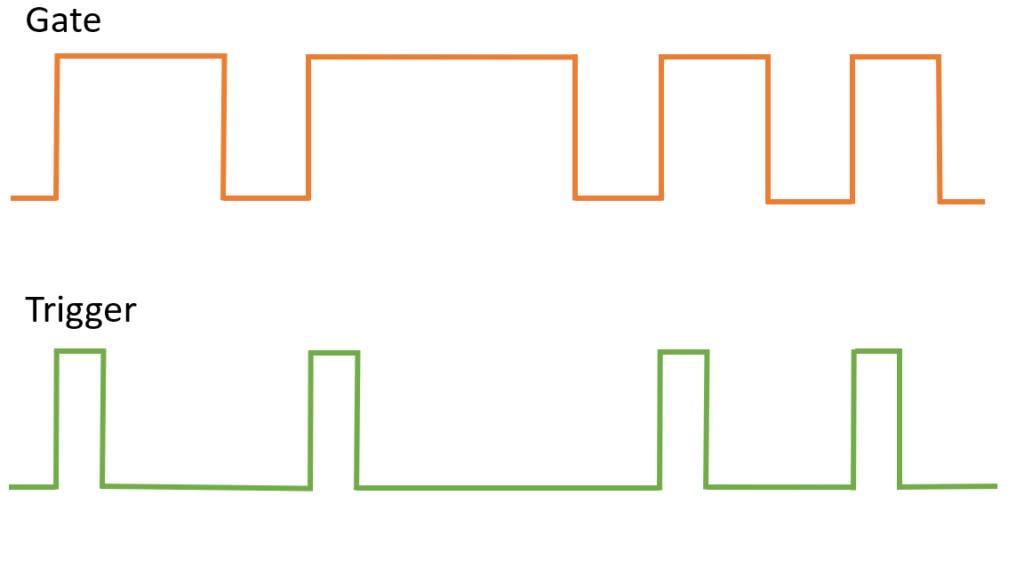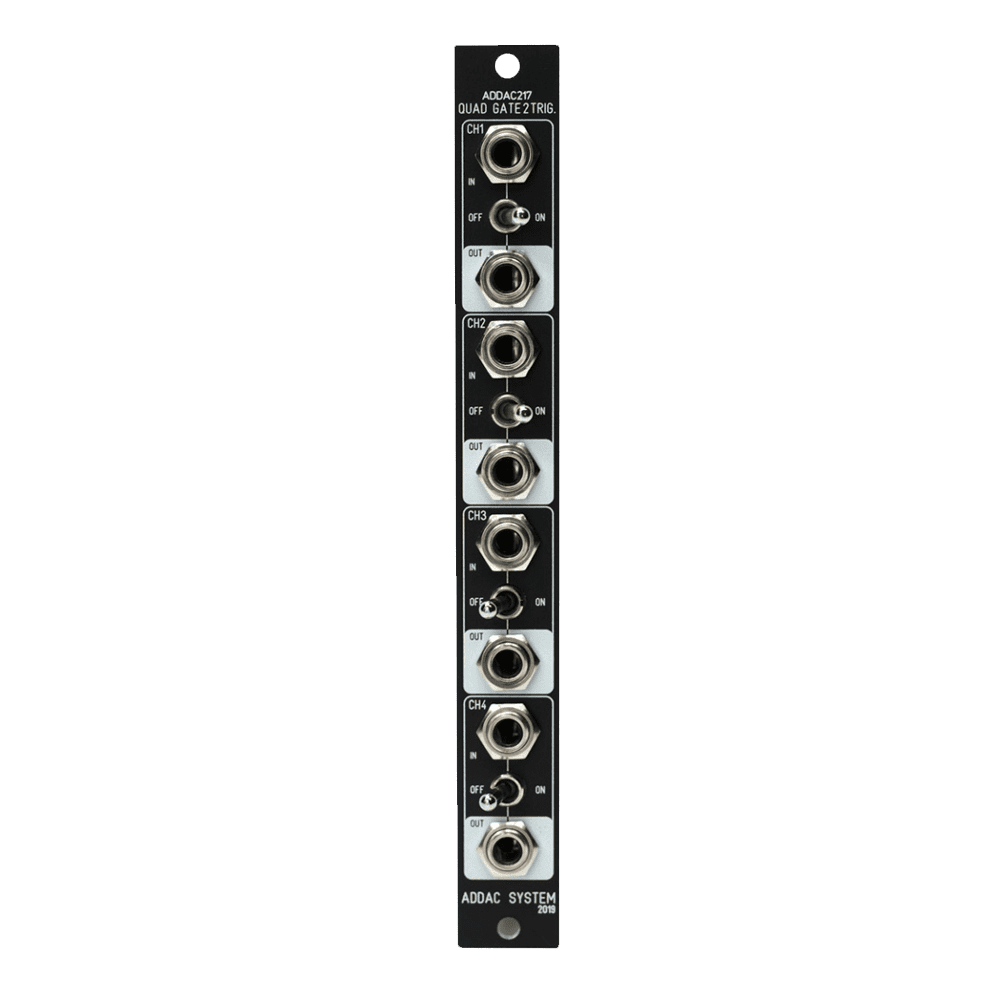So it might sound stupidly obvious when you say it out loud, but I just discovered that gates and triggers are different! I occasionally see scenarios where a module won’t trigger from a gate-out of my Beatstep Pro, or from a square LFO, until I put that signal through some other module such as the Music Thing Modular Turing Machine, which seemed to work some magic on it and make it work!
So what is the difference between a gate and a trigger?
Essentially they are both a square-shaped CV signal, the only difference is the length of the signal.
You can think of a gate signal as a key on your synth – you press it down and the gate opens (i.e. the voltage is positive), you release it and the gate closes (i.e. the voltage returns to 0).
A trigger meanwhile, can be thought of like hitting a cymbal. You strike the cymbal once, and your drumstick is in contact with the cymbal surface for a very short time. The sound of the cymbal however can resonate for seconds and naturally decay all on its own.

So when should I use a gate and when should I use a trigger?
Good question – this totally depends on the module you are using and what options you have to trigger it. Usually the module will specify if the input is a gate or a trigger, but often either will work as an input source.
However, there may be occasion when you only have a gate signal available, and your module will only accept a trigger input! For situations like this you would need to convert the gate to a trigger. Thankfully (as always) there are modules that will do just that for you!
For example, the ADDAC 217 Quad Gate to Trigger module will convert up to 4 gate signals to triggers. you can also bypass the conversion if you want to switch the signal back to a gate, without having to re-patch.

